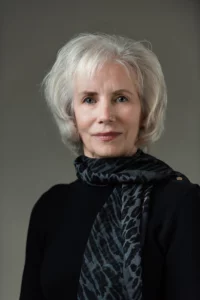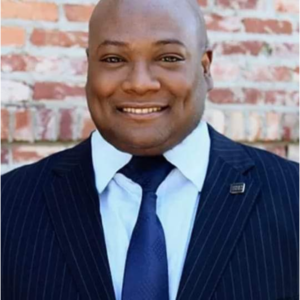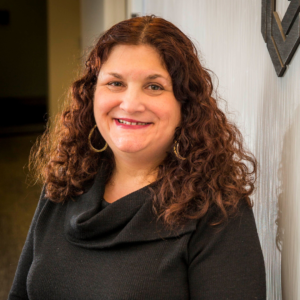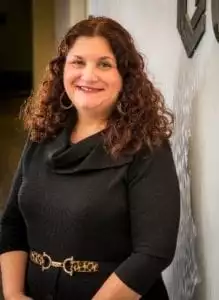The last month of the year is a time for widely celebrated religious and cultural holidays full of ritual and gift-giving, whether gelt (chocolate coins) for Hanukkah, handmade and educational gifts for Kwanzaa, or anything, really, for Christmas. December is also the occasion of Rohatsu or Bodhi Day, a meaningful celebration for Buddhists worldwide. And while most Americans may be unaware, this month also commemorates the date when three-quarters of the states ratified the Bill of Rights, granting and protecting the essential civil liberties of many people.
Every December 8, Buddhists all over the world celebrate Rohatsu or Bodhi Day. The holiday honors the historic vow by Buddha (Siddhartha Gautama) to sit under the Bodhi tree until he reached spiritual enlightenment. The word bodhi actually means “awakening” or “enlightenment,” and Buddhists observe the day through meditation, sometimes through the night until dawn. Zen Buddhists often participate in a week-long, intensive meditation retreat before the actual observance.
On Bodhi Day, temples hold special services where attendees chant, and bring offerings of flowers, fruit, water, incense, and other simple items. Many Buddhists also light candles or string colored lights in their homes or in trees to represent the many paths to enlightenment. To learn more, click here for an NPR interview about the holiday.
The Bill of Rights Day on December 15 recognizes and celebrates the importance of the first 10 amendments to the U.S. Constitution. Passed by Congress in 1789, these amendments guarantee our civil rights and liberties including freedom of speech, press, and religion. The document also sets rules for due process of law and gives states powers not delegated to the federal government. According to the National Archives, “The Constitution might never have been ratified if the framers hadn’t promised to add a Bill of Rights. The first ten amendments to the Constitution gave citizens more confidence in the new government and contain many of today’s Americans’ most valued freedoms.”
Click here to learn more, or here to find out how to participate in any of the National Archives’ civics-themed events about the Bill of Rights, including family-friendly activities.
This year, the joyous Jewish festival of Hanukkah takes place December 18-26. Considered a time for reaffirming the ideals of Judaism, the holiday originates in the 164 B.C. rededication of the Second Temple of Jerusalem. According to Hebrew Scripture, when Judas Maccabeus entered the Temple following its desecration three years earlier, he found only enough pure oil to burn for one day. Miraculously, that one small jar of oil lasted for eight straight days until new consecrated oil could be found, giving rise to the eight-day celebration of Hanukkah, also called the Festival of Lights.
Hanukkah is probably the most popular of all Jewish religious observances and is celebrated all over the world. Lighting one of eight candles on the menorah just after dark each evening is common, although some families choose to wait until everyone is home. (The ninth candle, the shamash, is used to light the other candles.) Other religious rituals include daily scripture readings, recitation of certain Psalms, and singing special hymns. In addition, the holiday is marked by special foods fried in oil – such as potato latkes and jelly donuts (sufganiyot) – to reflect the holiday’s origins. Hanukkah menus often include noodle kugel, brisket, roast chicken, matzo ball soup, and bread and pastries such as challah and rugelach. To learn 9 Things You Didn’t Know about Hanukkah click here, and for more about the holiday’s history, click here.
Christmas is an annual religious and cultural celebration held primarily on December 25th and observed by billions of people around the world. For Christians, the day represents the anniversary of the birth of Jesus of Nazareth whose life and spiritual teachings are the foundation of the religion. The first Christmas celebration is reported to have taken place during the Roman Empire on December 25, AD 336. Santa Claus (or Father Christmas), the patron of Christmas responsible for bringing gifts to children, arrived a bit later. Based on traditions from the 4th century related to Saint Nicholas, Santa was either a Christian saint or a monk. Christmas became a U.S. federal holiday in 1870.
Celebrations vary around the globe, from the Yule Goat in Sweden—now a 40-foot plus structure built from straw, weighing as much as 3.6 tons—to a dazzling giant lantern festival in the Philippines where each lantern represents the Star of Bethlehem. Some traditions—like decorating a Christmas tree, popularized by the German-born Queen Victoria, to baking cookies, gingerbread, fruitcake, and other seasonal sweets—are now widespread. To explore the history of Christmas and other interesting facts, click here. To find out what other countries do to celebrate, click here.
Kwanzaa, a secular and cultural holiday, is held December 26 – January 1. The observance was created in the 1960s by Maulana Karenga, a Black nationalist and later a college professor, “as a way of uniting and empowering the African American community in the aftermath of the deadly Watts Rebellion” in Los Angeles. Millions of people around the world now celebrate Kwanzaa. The name comes from the Swahili for “first fruits” as it was meant to be like African harvest festivals.
Karenga set out seven principles for the festival: unity (umoja), self-determination (kujichagulia), collective work and responsibility (ujima), cooperative economics (ujamaa), purpose (nia), creativity (kuumba), and faith (Imani). One of the most important aspects of Kwanzaa is the sharing of food. On Karamu, the last night of the festival, that means a potluck dinner with dishes such as gumbo, jambalaya, okra stew, and more, often based on West African recipes. To find out 5 Things You May Not Know about Kwanzaa, click here.


 Dr. Cheryl-Lynne McCalla, DO
Dr. Cheryl-Lynne McCalla, DO Kathleen Ramkaran, RN, CCM
Kathleen Ramkaran, RN, CCM Hali Gantumur
Hali Gantumur Yasmin
Yasmin  Jennifer Olsen GNP-BC
Jennifer Olsen GNP-BC Meena Raj, MD,
Meena Raj, MD, 

 Kimberly Grove
Kimberly Grove
 Pat Bishop
Pat Bishop Elizabeth Ariemma
Elizabeth Ariemma Ray Jay Garcia, M.D.
Ray Jay Garcia, M.D.
 Heidi Young
Heidi Young Matt Kestenbaum
Matt Kestenbaum
 Anne Silao-Solomon, M.D.
Anne Silao-Solomon, M.D. Matthew Irwin, M.D., M.S.W.
Matthew Irwin, M.D., M.S.W. Catherine McGrady, RN, MSN, is Vice President, Clinical Programs at Capital Caring Health. In this role she is responsible for the development, implementation, and monitoring of clinical programs in support of high-quality patient-centered care delivery across the continuum of services. Catherine also manages external partnerships including Capital Caring Health’s participation in ACOs and other value-based clinical programs
Catherine McGrady, RN, MSN, is Vice President, Clinical Programs at Capital Caring Health. In this role she is responsible for the development, implementation, and monitoring of clinical programs in support of high-quality patient-centered care delivery across the continuum of services. Catherine also manages external partnerships including Capital Caring Health’s participation in ACOs and other value-based clinical programs Jason Sobel, MD
Jason Sobel, MD Kremena Bikov
Kremena Bikov Stacy Brown
Stacy Brown Jackie Gouline
Jackie Gouline Susan Roberts
Susan Roberts Brenan Nierman
Brenan Nierman Annette Lindsay
Annette Lindsay Shannon Collier
Shannon Collier Carla Thompson
Carla Thompson Gabby True
Gabby True Evan Kirschner
Evan Kirschner Margaret Doherty
Margaret Doherty Henry Fuller
Henry Fuller Jennifer Godwin
Jennifer Godwin Sally Hughes
Sally Hughes LaWanda Middleton
LaWanda Middleton Hope Collazo
Hope Collazo Odessa Simpson
Odessa Simpson Anne Young
Anne Young Sherri Parker
Sherri Parker Catherine Kravolec
Catherine Kravolec Heidi Young, M.D.
Heidi Young, M.D.
 Hank Willner, M.D.
Hank Willner, M.D. Audrey Easaw
Audrey Easaw Julia Feldman
Julia Feldman Gus has been a part of the Capital Caring Health family for nearly fifteen years. Ten of those years have been in leadership, working with colleagues and co-workers to achieve the best in their ability while promoting CCH core values. Gus has a background in nursing and a lifelong passion for technology. In each position at CCH, Gus has found ways to integrate technology to enhance outcomes and job satisfaction.
Gus has been a part of the Capital Caring Health family for nearly fifteen years. Ten of those years have been in leadership, working with colleagues and co-workers to achieve the best in their ability while promoting CCH core values. Gus has a background in nursing and a lifelong passion for technology. In each position at CCH, Gus has found ways to integrate technology to enhance outcomes and job satisfaction.
 Linda Biedrzycki
Linda Biedrzycki Joe Murray
Joe Murray Lin Maurano
Lin Maurano Laura Branker
Laura Branker Cameron Muir, M.D.
Cameron Muir, M.D. Cameron Muir, M.D.
Cameron Muir, M.D. Fellowship
Fellowship Lee-Anne West, M.D.
Lee-Anne West, M.D.
 Steve Cone
Steve Cone

 Kieran Shah
Kieran Shah Altonia Garrett
Altonia Garrett Jason Parsons
Jason Parsons Nancy Cook
Nancy Cook Michael Byas-Smith, M.D.
Michael Byas-Smith, M.D. Olubukola Bolaji, M.D.
Olubukola Bolaji, M.D. Jennifer Gerhard, D.O.
Jennifer Gerhard, D.O. Hershell Foster
Hershell Foster Michael Toohig’s Story
Michael Toohig’s Story Liberating Europe
Liberating Europe Marrygold Ugorji’s Story
Marrygold Ugorji’s Story Sherri Parker, Team Leader Medical Social Worker
Sherri Parker, Team Leader Medical Social Worker Colleen Carberry, RN Case Manager
Colleen Carberry, RN Case Manager Paulette Davidson, Chaplain
Paulette Davidson, Chaplain Donna Smith
Donna Smith Tabitha Gingerich, NP
Tabitha Gingerich, NP Dwayne Barton, NP
Dwayne Barton, NP Caitlin Geary
Caitlin Geary Sayaka Hanada
Sayaka Hanada Sherri Parker
Sherri Parker
 Mandy Brouillard
Mandy Brouillard Tamara Barnes, M.D.
Tamara Barnes, M.D. Alan Goldblatt, M.D.
Alan Goldblatt, M.D. Amanda Keerbs, M.D.
Amanda Keerbs, M.D. Adam Knudson, M.D.
Adam Knudson, M.D. Peyman Mamdouhi, D.O.
Peyman Mamdouhi, D.O. John McCue, D.O.
John McCue, D.O. Christopher Pile, M.D.
Christopher Pile, M.D. Maleeha Ruhi, M.D.
Maleeha Ruhi, M.D. Mohammad Saleem, M.D.
Mohammad Saleem, M.D. Jason Sobel, M.D.
Jason Sobel, M.D. Carolyn Richar
Carolyn Richar Susan Boris
Susan Boris Keith Everett
Keith Everett Vivian Hsia-Davis
Vivian Hsia-Davis David Schwind
David Schwind Eric De Jonge, M.D.
Eric De Jonge, M.D. Melissa McClean, N.P.
Melissa McClean, N.P. Shaz Anwar, D.O.
Shaz Anwar, D.O. Petros
Petros  Neil Parker’s Story
Neil Parker’s Story Sulaiman Bangura’s Story
Sulaiman Bangura’s Story Steven Skobel’s Story
Steven Skobel’s Story